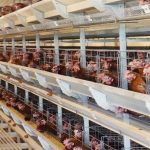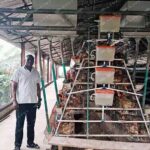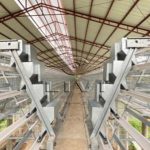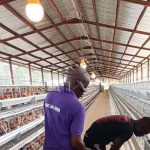Starting a poultry farm with 10,000 laying hens requires careful planning and significant investment. This article breaks down the costs involved in establishing and operating such a farm, including land, infrastructure, equipment, and ongoing operational expenses.
1. Land Cost
The ideal land size for a 10,000-hen poultry farm is approximately 800 square meters (80m x 10m). This area accommodates:

- The main chicken house
- Feed silo
- Egg storage facility
- Lanes for manure removal trucks
Annual land rent is estimated at $307.69. While this size is standard, the layout can be adapted to fit existing land, with the chicken house requiring a minimum length of 50 meters.
2. Chicken House Construction
For a 10,000-hen operation, an economical open layer chicken house is recommended. The specifications are:
- Length: 70 meters
- Width: 8 meters
- Height: 3.5 meters
- Design: A-type 4-tier chicken battery cage system
- Ventilation: Natural
The construction cost for this structure is $21,777.23. Assuming a 20-year lifespan, the annual infrastructure cost amounts to $1,088.92.
3. Layer Raising Equipment Cost
Modern poultry farming relies heavily on automation to improve efficiency and reduce labor costs. The recommended automatic layer cage equipment includes systems for:

- Automatic layer feeding equipment
- Automatic layer drinking equipment
- Automatic layer manure cleaning equipment
- Automatic layer egg collecting equipment
These layer cage systems enhance chicken comfort, increase egg production, and ensure consistent care. The annual cost for layer raising equipment is approximately $1,936 per year.
4. Chicken Raising Costs
The lifecycle of laying hens in this farm model is 100 weeks, divided into two main stages:
- Brooding period (0-17 weeks)
- Laying period (18-100 weeks)
Here’s a breakdown of the breeding costs:
- Chick purchase: $2,040 (10,205 chicks at $0.2 each, accounting for a 2% mortality rate)
- Brooding period feed: $3857.49 (3.78kg/bird at $0.1/kg)
- Laying period feed: $43881.5 (43kg/bird at $0.1/kg)
- Vaccines: $3,076.92
- Water: $400.24 (1,277,969.8kg)
- Electricity: $1,559.82
- Labor: $12,023
The total breeding cost from brooding to the end of the laying cycle is $66851.87.
Total Investment

Adding up all the costs:
- Annual land rent: $307.69
- Annual infrastructure cost: $1,088.92
- Annual layer raising equipment cost: $1,9360.00
- Total breeding cost: $87608.48
The total investment required for a 100-week cycle of 10,000 laying hens is approximately $87608.48.
Conclusion
Starting a 10,000-hen poultry farm requires a substantial investment, with the majority of costs going towards breeding expenses, particularly feed. To ensure profitability, farmers must focus on reducing breeding costs and increasing efficiency.
It’s important to note that this estimate doesn’t include potential revenue from egg sales or the resale value of hens after their laying cycle. Additionally, costs may vary depending on location, market conditions, and specific operational choices.
For those interested in starting a poultry farm, it’s advisable to conduct thorough market research and possibly consult with industry experts to create a detailed business plan tailored to your specific circumstances.






